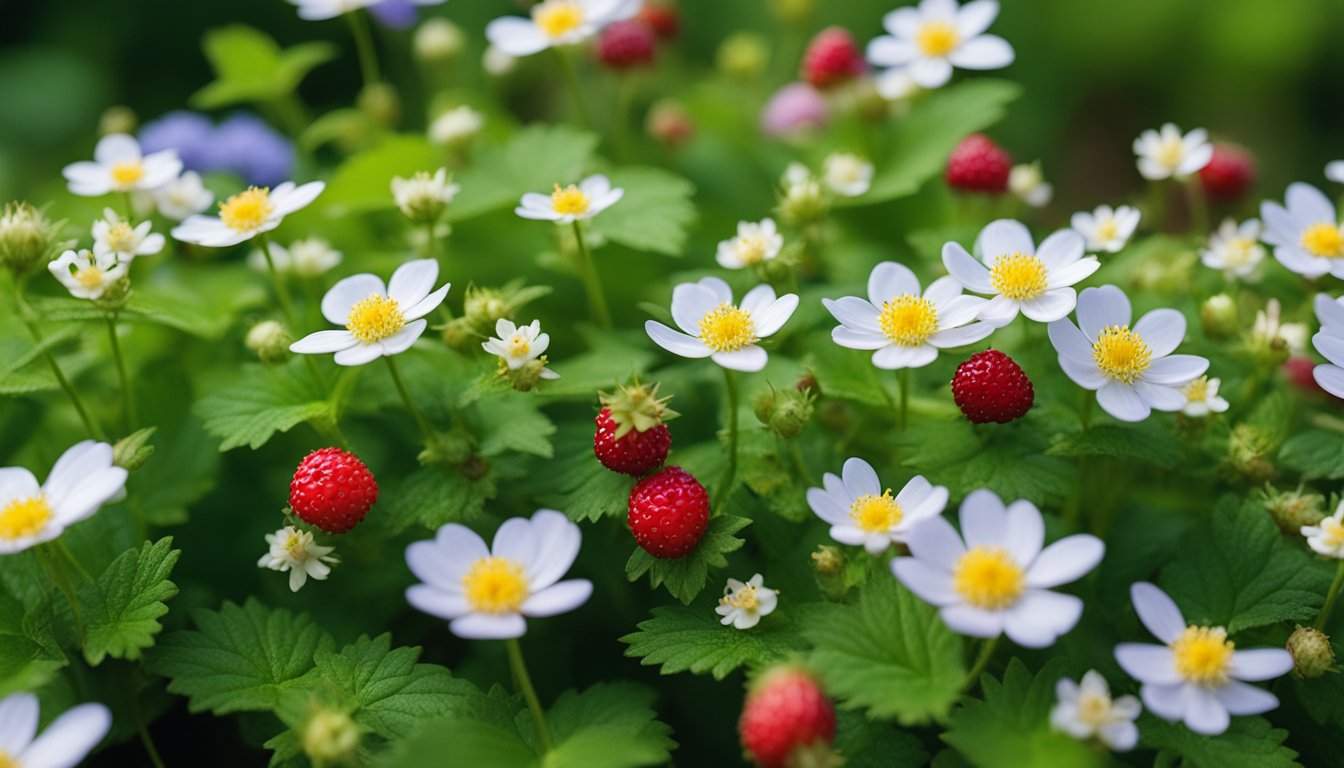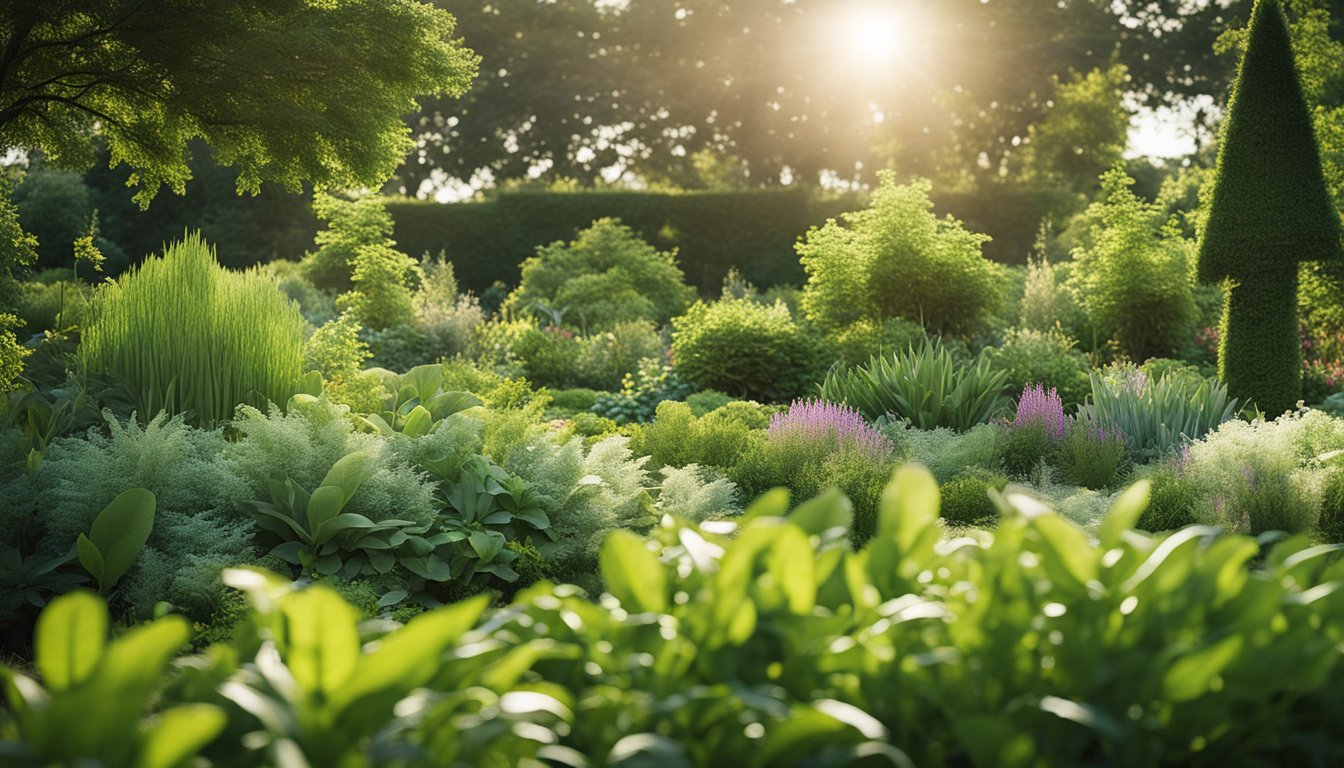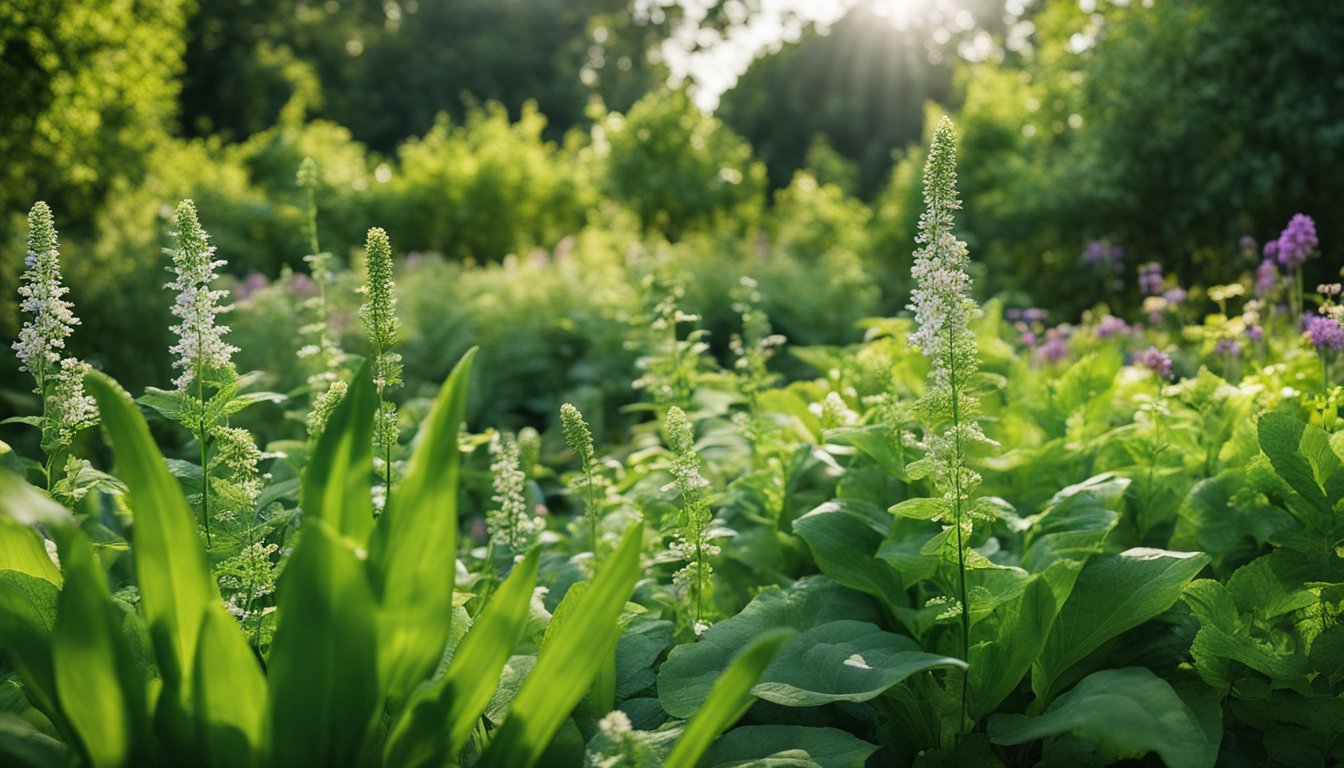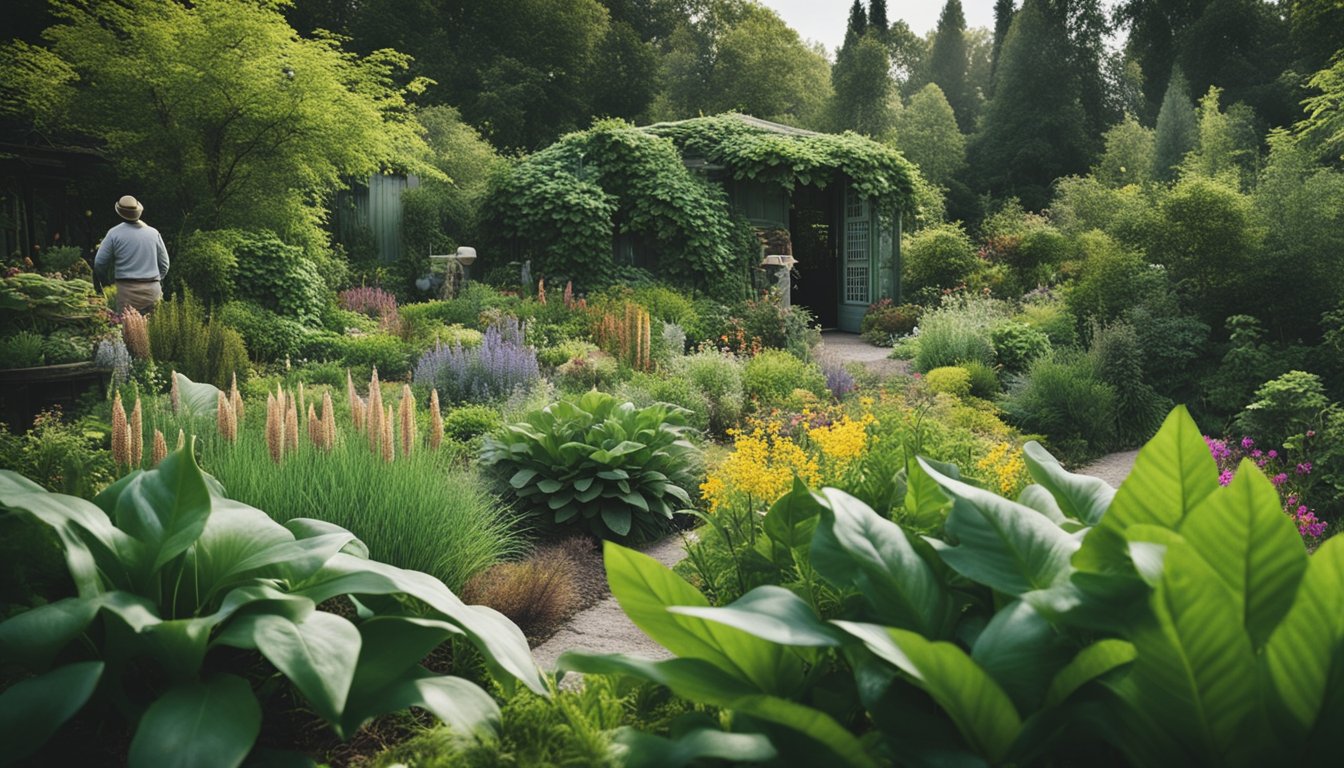Late updated: 29 Jul 2024 14:07
Written by: Emily Thornton
Edible Native Plants For UK Gardens: A Comprehensive Guide
Edible native plants offer a unique combination of beauty and utility for UK gardens. Integrating these plants can enhance both the aesthetics and ecological value of your green space while also providing fresh ingredients for your kitchen. By planting native species, we not only ensure that our gardens thrive with minimal intervention but also support local wildlife, including pollinators and insects, which are crucial for a healthy ecosystem.

Growing native plants like wild garlic, elderflower, and hawthorn can be particularly rewarding. Not only do these plants require less maintenance due to their adaptation to local conditions, but they also contribute to the natural biodiversity. Edible native plants are an excellent way to create a harmonious garden that is beneficial both to us and the environment.
To successfully incorporate edible native plants into your garden, it is essential to identify which plants are best suited to your specific conditions. Choosing the right plants can create a vibrant and sustainable garden where flora and fauna co-exist beautifully. Exploring the variety of native edible plants available can turn your garden into a haven of natural health and ecological balance.
Key Takeaways
- Integrating edible native plants enhances garden and ecosystem.
- Choose suitable plants for local conditions to benefit wildlife.
- Fosters a sustainable, low-maintenance garden environment.
Identifying and Choosing Edible Native Plants

Selecting edible native plants for UK gardens involves familiarising ourselves with specific species and adopting the best foraging and harvesting practices.
Essential Plant Familiarity
We begin by getting to know the various wildflowers, trees, and shrubs native to the UK that offer edible parts. Wild garlic, Allium ursinum, is an early spring favourite, identifiable by its broad, shiny leaves and strong garlicky scent. Meanwhile, blackberries from brambles in hedgerows provide delicious fruits in late summer.
Another valuable plant is hawthorn, with its young leaves, flowers, and berries all being edible. The crab apple tree produces small, tart fruits suitable for preserves. Additionally, lime trees offer edible leaves, especially in spring when they're young and tender.
Yarrow and angelica contribute both to culinary and medicinal uses, while the dog rose produces vitamin-rich rosehips perfect for syrups and jams. Familiarising ourselves with these plants enhances our gardening choices and foraging efficiency.
Best Practices for Foraging and Harvesting
When foraging, we must ensure sustainable practices. Harvesting young leaves like those of wild strawberries, hedge garlic, and nettle (Urtica dioica) before they mature ensures a higher nutritional value and better taste. Always avoid areas exposed to pollution or pesticide use.
Carefully gathering seeds from species like sea buckthorn and elderberry ensures the plants’ regrowth while providing us with nutritious, versatile ingredients. For trees such as hazel, pick the nuts once they've fully ripened in autumn.
Avoid overharvesting; take only what we need. This way, there's plenty left for wildlife and future growth. When harvesting from hedgerows or near ponds, respect the local ecosystem, ensuring minimal disruption.
By integrating these edible native plants into our gardens, we support biodiversity and enjoy fresh local produce.
Incorporating Edible Plants into Garden Ecosystems

Integrating edible plants into our garden ecosystems can enhance biodiversity, support native wildlife, and provide seasonal produce. This practice merges aesthetics with functionality, offering a sustainable and attractive landscape.
Design Elements for Edible Landscaping
When designing our garden, we should focus on creating a balance between edible and ornamental plants. Forest gardens are an excellent model, utilising layers from tall nut trees to ground covers like violets and nasturtium.
Strategically placing shrubs and bushes can create natural boundaries. Incorporating wildflowers such as primrose, bellflower, and honeysuckle will not only beautify the space but also provide nectar for pollinators like bees and butterflies.
A well-planned lawn and meadows interspersed with edible flowers can create visually appealing spots that also offer foraging options during various seasons.
Supporting Biodiversity with Edible Plants
By adding edible plants to our gardens, we enhance the habitat for a variety of wildlife. Wildflowers and edible flowers act as magnets for pollinators, while plants like the cuckoo flower and mallow support a range of insects.
Ponds can provide water sources and additional biodiversity, supporting frogs and dragonflies. Edible herbaceous plants like violets and nasturtium can be planted around pond edges for a lush look.
We should also consider integrating nut trees and fruit bushes such as chestnuts and hazelnuts, which offer food to birds and mammals while providing a harvest for the garden.
Seasonal Considerations and Plant Care
To gain the most from our edible garden, it's crucial to plan for seasonal variations. Many native edible plants have specific needs for in season care. For instance, autumn is a great time to plant hardy nuts and set up a forest garden.
We should monitor the soil's moisture levels and adjust care routines accordingly, especially for plants like cranberries that require consistently moist soil. Utilising plants like the wine cap mushrooms can help with soil-building and water retention through mulch decomposition.
Regular foraging and harvesting should be done to keep the growth healthy and productive, ensuring a year-round supply of fresh produce. The RHS provides excellent resources on plant care tailored to UK gardens.
Frequently Asked Questions

Edible native plants in UK gardens span a variety of categories, from common herbs to indigenous fruits and vegetables. This section addresses practical queries about which plants to grow, forage, and consume safely.
What are some commonly found edible plants that are indigenous to UK gardens?
Common native edible plants include nettles, dandelions, and hawthorn. Nettles are particularly good for soups and teas. Dandelion leaves can be used in salads, while hawthorn berries make great jellies.
Which wild herbs and spices can be foraged in the UK?
Wild garlic, also known as ramsons, can be found in many woodlands. Other easily foraged herbs include sorrel and wild thyme. These herbs can enhance a variety of dishes with their unique flavours.
Can you list edible tree leaves that are safe to consume in the UK?
Young beech leaves are edible and often added to salads. Lime tree leaves are also a good choice for raw consumption. Both can add a subtle, slightly sweet flavour to dishes.
What fruits can one typically grow in a UK-based garden that are native to the region?
Blackberries and elderberries grow wild and can be easily cultivated in gardens. Crab apples and wild strawberries are also excellent options. These fruits adapt well to local climate conditions.
Which vegetables are originally from the UK and suitable for home gardening?
Sea kale is a perennial vegetable native to the UK that grows well in coastal areas. Good King Henry, also known as Lincolnshire spinach, is another native plant that can be used similarly to spinach. Both are nutritious and hardy.
How can beginners get started with foraging for edible wild plants in the UK?
Start by obtaining a reliable field guide to edible wild plants. Attend local foraging walks led by experts to learn firsthand. Always consult multiple sources before consuming any foraged food to ensure it is safe.
